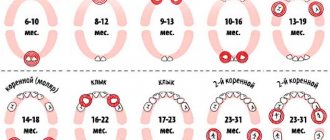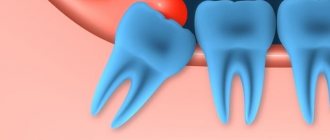The article was prepared by a specialist for informational purposes only. We urge you not to self-medicate. When the first symptoms appear, consult a doctor.
Suppositories for reducing body temperature are used in the treatment of children and adults. This form of release becomes especially relevant when it is not possible to take the drug orally. The active component is absorbed through the intestinal mucosa, enters the bloodstream and spreads throughout the body, providing an antipyretic effect. The entire process bypasses the upper gastrointestinal tract without causing irritation.
In addition to antipyretic properties, suppositories may have a number of other effects. They reduce pain, stop inflammation, and make you feel better. The list of contraindications for drugs in the form of suppositories is much shorter than for tablets, capsules or syrups. However, they can also cause side effects, so before starting treatment you should consult a specialist.
In the article, we have collected the most frequently prescribed suppositories for fever for children and adults, examined the features of their use, as well as the pros and cons of each drug [1], [2], [3].
- Paracetamol
Antipyretic drugs for children. Fever, increased body temperature in a child
Increased body temperature is the most common and one of the most important symptoms of various diseases and conditions of childhood. Feverish conditions become the immediate reason for the use of various medications. Therefore, one of the important problems in pediatrics is the uncontrolled use of medications with a low rise in temperature (less than 38 degrees).
This is due to a lack of understanding of the importance of temperature response as an element of the body’s fight against disease. Consultations with a pediatrician at the Markushka children's clinic.
Terms of use
- It is better to put a candle after defecation, otherwise it may provoke the urge to defecate.
- Before starting the procedure, you need to wash your baby.
- If the baby says that he immediately wants to go to the toilet, you should ask him to be patient, as a false urge has arisen.
- If there is an inflammatory process in the rectum, use is prohibited.
- It is recommended to store the drug in the refrigerator and administer it chilled. If you hold the suppository in your hand for a long time, it will become deformed from the heat.
- If the baby resists and squeezes the anus muscles tightly, do not rush, as this can cause injury to the delicate mucous membrane.
If the baby still went to the toilet after using the candle, do not rush to put a new one . Some of the medicine may have had time to be absorbed into the blood. Set the thermometer in half an hour. If you see that the dynamics are declining, a new dose will not be required.
Fever is a protective-adaptive reaction of the body
Fever is a protective-adaptive reaction of the body that occurs in response to exposure to pathogenic stimuli and is characterized by a restructuring of thermoregulation processes, leading to an increase in body temperature and stimulating the natural reactivity of the body. The biological significance of fever is the activation of immune defense. An increase in body temperature leads to increased phagocytosis, increased synthesis of interferons, activation and differentiation of lymphocytes and stimulation of antibody genesis. Increased body temperature prevents the proliferation of viruses, cocci and other microorganisms.
Fever is fundamentally different from the increase in body temperature observed when the body overheats, which occurs due to various reasons: with a significant increase in ambient temperature, active muscular work, etc. With overheating, the thermoregulation center is set to normalize the temperature, while with fever the thermoregulation center purposefully rebuilds the “set point” to a higher level of body temperature.
Impact
The effect of the drug is based on the properties of the active substance to provide analgesic and antipyretic effects. Paracetamol blocks a special isoenzyme - cyclooxygenase in the central nervous system, which reduces signs of inflammation and pain, and also affects the centers responsible for thermoregulation processes in the human body.
When administered rectally, the active substance is absorbed in a volume of 68-88%. In the blood, the maximum concentration is reached after approximately 2-3 hours. The analgesic effect lasts for 4-6 hours, and the child’s body temperature can be normalized for at least 6 hours.
Causes of fever and increased body temperature in children
Since fever is a nonspecific protective-adaptive reaction of the body, the reasons that cause it are very diverse. Fever most often occurs in infectious diseases, among which acute respiratory diseases of the upper and lower respiratory tract dominate. Fever of infectious origin develops in response to exposure to viruses, bacteria and their decay products. An increase in body temperature of a non-infectious nature can have different origins: central (hemorrhage, tumor, injury, cerebral edema), psychogenic (neurosis - consultations with a pediatric neurologist at the Markushka clinic, mental disorders, emotional stress), reflex (pain syndrome due to urolithiasis) , endocrine (hyperthyroidism - pediatric endocrinologist, Markushka clinic, pheochromocytoma), resorptive (bruise, necrosis, aseptic inflammation, hemolysis); it can also occur in response to the administration of medications as a result of an allergic reaction (for example, to ephedrine, xanthine derivatives, antibiotics and many others - consult a pediatric allergist at the Markushka polyclinic).
With the same level of hyperthermia, fever in children can occur differently . So, if heat transfer corresponds to heat production, this indicates an adequate course of fever and is manifested by the child’s relatively normal state of health, pink or moderately hyperemic skin color, moist and warm to the touch (“pink fever”). This type of fever often does not require the use of antipyretics. In the case when, with increased heat production, heat transfer is inadequate due to impaired peripheral circulation, the course of the fever is prognostically unfavorable. In this case, severe chills, pale skin, acrocyanosis, cold feet and palms (“pale fever”) are noted. These children usually require antipyretic drugs in combination with vasodilators and antihistamines (or antipsychotics). Calling a pediatrician to your home - Markushka clinic.
conclusions
Which suppositories for fever are best for children is an individual question; they should be selected based on the recommendations of a pediatrician you trust, as well as from practice. An undeniable advantage of treatment with this particular form of the drug is that it is convenient to use for infants, as well as at night at a temperature of about 38°C . This is exactly what Dr. Komarovsky emphasizes in his interview. We advise all parents to watch it; among other things, it tells what conditions should be created in the room of a sick child (temperature, humidity).
At what temperature should you give an antipyretic to a child?
In accordance with WHO recommendations, as well as domestic recommendations, antipyretic drugs should be prescribed when the child’s axillary temperature exceeds 38.5 degrees. The exceptions are children at risk of developing febrile seizures, with severe disease of the pulmonary or cardiovascular system and in the first two months of life.
According to national guidelines, antipyretics are recommended to be given in the following cases:
- previously healthy children over three months of age - with a body temperature above 39.0 degrees and/or with muscle aches and headaches;
- children with a history of febrile convulsions - at a body temperature above 38.0 degrees;
- children with severe heart disease (consultation with a pediatric cardiologist) and lungs - at a body temperature above 38.5 degrees;
- for children in the first three months of life - at a body temperature above 38.0 degrees.
In a child with an uncomplicated premorbid background, the temperature reaction, as a rule, is favorable (“pink fever”) if the temperature does not exceed 39.0 degrees; You should refrain from using medications. Drinking plenty of fluids is recommended, physical methods of cooling can be used (the child should be uncovered and wiped with water at room temperature, clothing should be loose, light, the temperature in the room should not exceed 20 degrees, it is possible to use a therapeutic bath with a temperature 2 degrees below body temperature) .
Medicines with antipyretic purposes should not be prescribed for a regular course of administration several times a day, regardless of the temperature level, since this sharply changes the temperature curve, which may complicate the diagnosis of the underlying disease. The next dose of an antipyretic drug should be prescribed only after the child’s body temperature rises again to a critically high level.
The basis of therapy in children is always the treatment of the underlying disease, which led to an increase in temperature, and antipyretic therapy is only symptomatic.
Pros and cons of using suppositories
If the baby has a high fever, pediatricians recommend giving syrup based on paracetamol or ibuprofen, since in this form the medicine acts as quickly as possible, within a quarter of an hour.
Rectal suppositories show their effectiveness after 35-40 minutes. But there are cases when their use for children is considered optimal, for example, if the baby falls asleep, or the gag reflex prevents the medicine from entering the body.
| pros | Minuses |
|
|
Antipyretics
Historically, there are several groups of drugs that can be used for antipyretic purposes. These include, first of all, non-opioid analgesics (analgesics-antipyretics), which to this day remain one of the most used drugs in pediatric practice. This group of drugs combines several properties: antipyretic, anti-inflammatory, analgesic, and antithrombotic, which potentially make it possible to control the main symptoms of many diseases. No other group of drugs has such a range of positive effects. Analgesics-antipyretics have been used in medicine as antipyretic drugs for more than 200 years. Currently, several pharmacological groups of non-opioid analgesics have been created, which are divided into non-steroidal anti-inflammatory drugs and “simple analgesics” (acetaminophen). Acetaminophen (paracetamol) is not included in the group of non-steroidal anti-inflammatory drugs, since it has virtually no anti-inflammatory effect.
Precautionary measures
Precautionary measures when using antipyretic suppositories are quite simple, but they should not be neglected.
- Study the instructions for the medicine before using it.
- Store suppositories in the refrigerator, so the shape and consistency will not be affected.
- Strictly follow the dosage prescribed by your doctor.
- Do not take for more than 3-5 days (depending on specialist recommendations).
- Paracetamol-based products should not be combined with medications with the same active ingredient.
- It is better to replace antipyretic suppositories for children over 3 years old with syrup or tablets.
- Introduce fever suppositories for children according to the rules to prevent injury.
Children's antipyretic: aspirin, analgin, ibuprofen, paracetamol
When choosing an antipyretic drug for a child, it is necessary, first of all, to take into account the safety of the drug, and also pay attention to the ease of use and the availability of children's dosage forms for different age groups.
Despite the high effectiveness of analgesics and antipyretics, their use in children is not always safe. Thus, there is convincing evidence that the use of acetylsalicylic acid (Aspirin) for viral infections in children may be accompanied by Reye's syndrome, characterized by toxic encephalopathy and fatty degeneration of internal organs, mainly the liver and brain. Acetylsalicylic acid increases the risk of developing inflammatory changes in the gastrointestinal tract, disrupts blood clotting, increases vascular fragility, and in newborns it can displace bilirubin from its connection with albumin and thereby contribute to the development of bilirubin encephalopathy. WHO experts do not recommend the use of acetylsalicylic acid as an antipyretic in children under 12 years of age. By order of the Pharmaceutical Committee of the Russian Federation, the use of acetylsalicylic acid for acute viral infections is permitted from the age of 15. However, under the supervision of a doctor, acetylsalicylic acid can be used in children with rheumatic diseases.
In pediatrics, antipyrine, aminophenazone, phenazone, butadione, amidopyrine, and phenacetin were excluded due to toxicity . Due to the high risk of hepatotoxicity, the use of nimesulide as an antipyretic drug is not advisable. It has been established that nimesulide (Nise and Nimulid) has a significantly higher incidence of serious side effects when compared with ibuprofen and paracetamol in average therapeutic doses. In European countries, nimesulide is not approved for use in children under 12 years of age. The use of nimesulide in Russia is possible on the recommendation of a doctor in children over two years of age, but the prescription is advisable only when long-term anti-inflammatory therapy is necessary, which usually occurs in rheumatology.
Metamizole sodium ( Analgin ), which can cause anaphylactic shock, agranulocytosis, as well as a prolonged collapsing state, is not recommended as a first-line antipyretic drug. Analgin and metamizole-containing drugs can be used (parenterally only) in urgent situations, such as hyperthermic syndrome, acute pain in the postoperative period, and others that are not amenable to other therapy.
Thus, when choosing antipyretic drugs for children, it is especially important to focus on highly effective drugs with the lowest risk of adverse reactions.
Why are suppositories better than tablets?
Most people strongly associate the need to use suppositories with the treatment of constipation, hemorrhoids, and gynecological diseases. However, contrary to popular belief, they operate not only at the local level. This is their main difference from tablets.
The active components contained in the suppository quickly penetrate the bloodstream, affecting the body as a whole (systemic effect). This is possible due to the high absorption capacity of the rectal mucosa, as well as the well-developed circulatory system of the pelvic organs.
A suppository, unlike a tablet, does not have to travel a long way through the entire gastrointestinal tract. The drug is not exposed to acid-base conditions, its activity is not suppressed by digestive enzymes.
Candles can be used regardless of meals. They do not have a pronounced effect on the liver and kidneys, which reduces the likelihood of allergic reactions and side effects. All this enhances the effectiveness of the drug. A tablet taken at the same dose is often weaker than a suppository.
Sometimes a person cannot take a medicine orally for fever due to certain circumstances, for example, when he started vomiting, or there was an exacerbation of diseases of the digestive system. Candles are convenient to use in the treatment of small children. In some cases, this dosage form is the only one possible for use.
Antipyretic drugs, remedies, preparations for children. Ibuprofen, paracetamol, nurofen
Numerous studies have shown that among all analgesic-antipyretic drugs, ibuprofen and paracetamol are the safest drugs and are officially recommended by the World Health Organization and national programs in pediatric practice as antipyretics.
Paracetamol and ibuprofen can be prescribed to children from the first months of life (from 3 months of age - without a prescription). Recommended single doses: paracetamol - 15 mg/kg, ibuprofen - 7.5-10 mg/kg (in dosage forms intended for children). Repeated use of antipyretics is possible no earlier than after 4–5 hours ( Nurofen suspension for children is valid for up to 8 hours), but no more than 4 times a day.
It is well known that delivery methods, organoleptic properties and even the appearance of a drug in pediatrics are no less important than the drug itself. Sometimes the effectiveness of the drug depends on the delivery method. Therefore, the emergence of a new over-the-counter form, Nurofen for children, rectal suppositories, has expanded the possibility of using ibuprofen in children from 3 months of age in the complex treatment of acute respiratory diseases. Finding a good pediatrician - the Markushka clinic.
Based on materials from the journal “Pediatrics” (2009, E. E. Lokshina O. V. Zaitseva S. V. Zaitseva)
How to light candles for your baby?
If the child is an infant:
- Place the baby on his back.
- Lubricate the anus with cream or oil.
- Grasp the child's legs with your hand and lift them slightly. With your free hand, insert the suppository into the anus.
- When the candle passes through the sphincter, slight muscle resistance is felt. After this, the suppository is inserted another half centimeter.
- Lightly squeeze your buttocks and hold for a while.
If the candle does not go into the required depth, it will pop back out. In this case, the procedure is repeated again with a new suppository.
If the child is older:
- Lay it on its side.
- Lubricate the anus with Vaseline.
- Ask the child to relax his muscles so that the candle can go in easier.
- Spread your buttocks with your fingers.
- Insert the suppository behind the sphincter.
- Squeeze your buttocks and hold for about 10 minutes.
Rectal suppositories provoke the child to have a bowel movement. To prevent this from happening, it is advisable to do an enema before the procedure. It is important that the candle is cold. When warm, it thaws and is more difficult to introduce.
Reviews from parents
Milana: “My daughter is 1.5 years old. I noticed the development of hemorrhoids. On the doctor's advice, I used Nova Vita. After the course of treatment everything went away. I'm very happy".
Oleg: “My son (11 years old) has an unpleasant pathology – hemorrhoids. He told me first, as a father. They prescribed Relief, inserted it for 4 days. The child no longer complains of itching and pain.”
Elizaveta: “My daughter is a schoolgirl and constantly watches the monitor. I've had hemorrhoids. The doctor prescribed suppositories with propolis. We completed the entire course, I don’t see any pathology.”
To date, children's suppositories for hemorrhoids have not yet been developed. However, specialists use drugs intended for adults. It is important to note that such treatment is prescribed only if other methods do not help.
It is possible to defeat parasites!
Antiparasitic Complex® - Reliable and safe removal of parasites in 21 days!
- The composition includes only natural ingredients;
- Does not cause side effects;
- Absolutely safe;
- Protects the liver, heart, lungs, stomach, skin from parasites;
- Removes waste products of parasites from the body.
- Effectively destroys most types of helminths in 21 days.
There is now a preferential program for free packaging. Read expert opinion.
Read further:
Terzhinan for ureaplasma: vaginal suppositories for the effective treatment of female ureaplasmosis
Vaginal suppositories for chlamydia in women: description and use
Ferrolax suppositories: instructions for use, description, cost of the drug
Deworming products for children: the safest and most effective methods of preventing helminthiasis
Tinidazole tablets and suppositories: pharmacological action, composition and contraindications
Suppositories for trichomoniasis for women: which suppositories are best to use, prices and how to use
special instructions
The drug should not be used for generalized or atypical herpetic infections. Since the medicine can cause an allergic reaction, it is not prescribed for atopic dermatitis or eczematous rashes. The drug is not recommended for:
- tumor processes on the skin,
- familial pemphigus Gougereau-Hailey,
- mental disorders,
- simultaneous use of sedative drugs,
- neutropenia less than 1.5×109,
- the platelet count in the blood is less than 90,000/µl,
- diseases in which there is a disruption of the central nervous system.
Disease 2 years
If a child constantly strains and cries during bowel movements, and then throws a tantrum, then parents need to examine the anus for the presence of a network of blood vessels and check for blood in the stool.
If these signs are detected, then you need to make an appointment with a pediatrician who will prescribe a special ointment or suppositories, such as Gepatrombin G.









